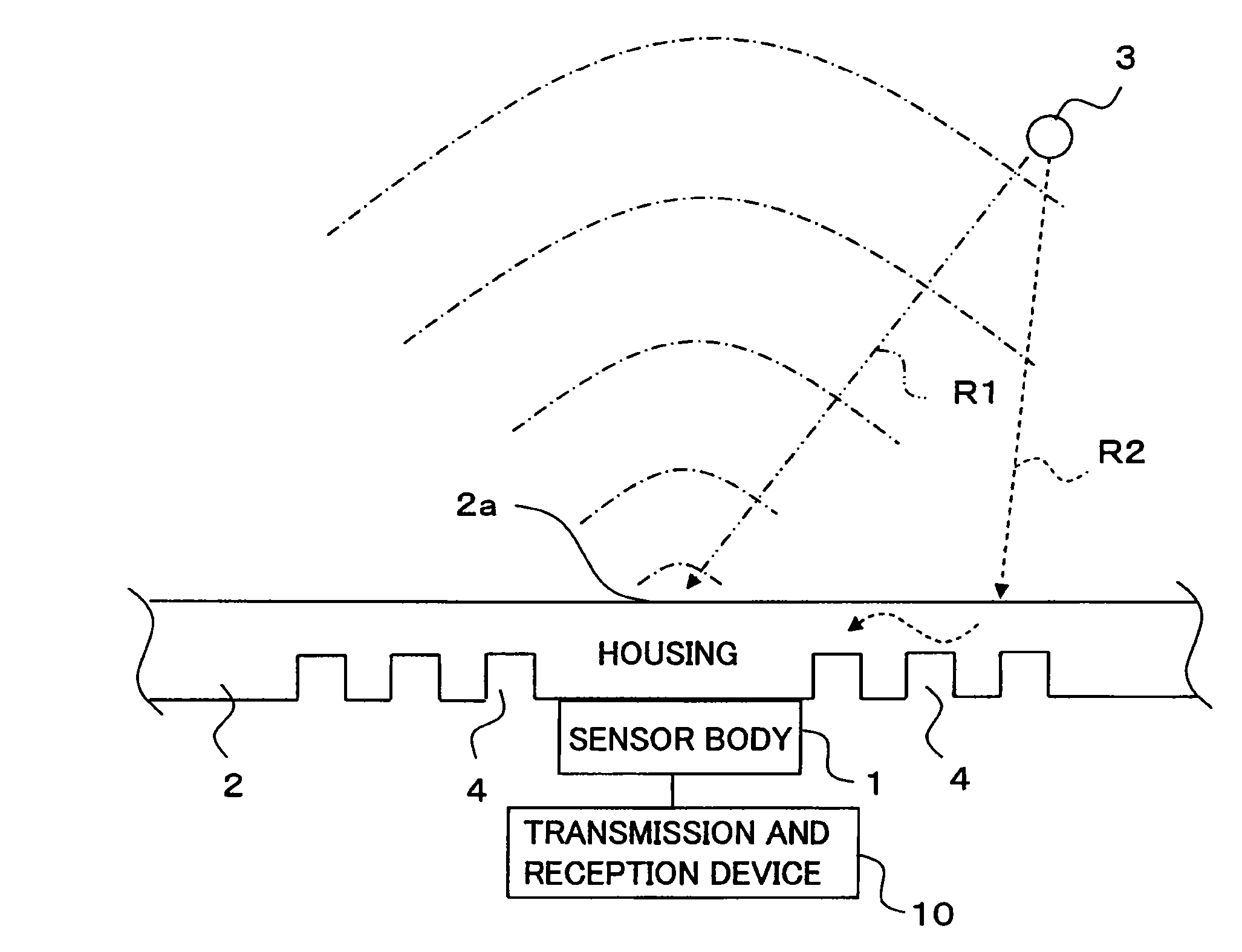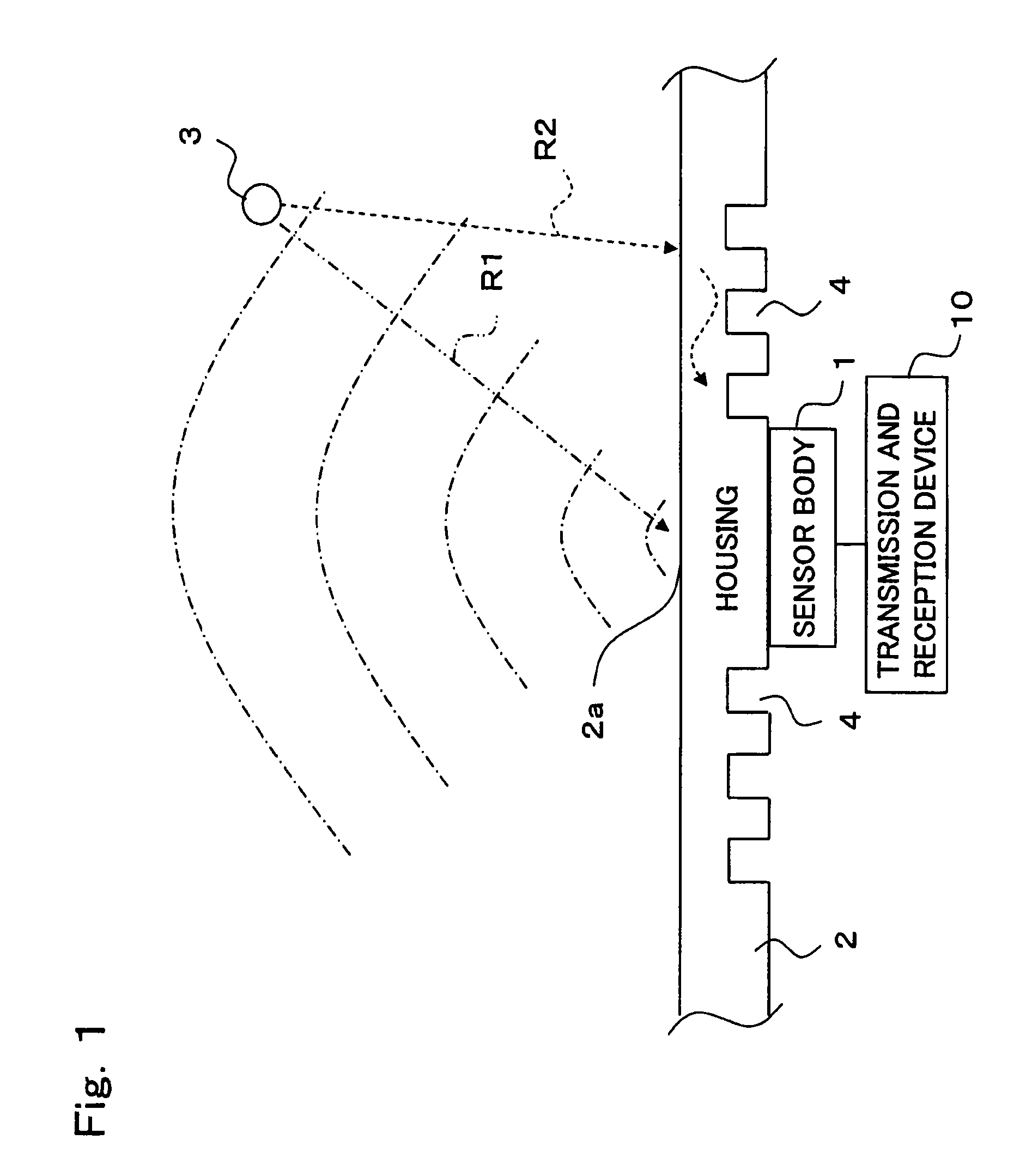Airborne ultrasonic sensor
an ultrasonic sensor and airborne technology, applied in the field of airborne ultrasonic sensors, can solve the problems of sensor spurious wave, composite or synthesized wave of spurious wave, amplitude of composite wave becomes smaller, etc., and achieve the effect of suppressing or reducing spurious wave and obtaining stable reception signal
- Summary
- Abstract
- Description
- Claims
- Application Information
AI Technical Summary
Benefits of technology
Problems solved by technology
Method used
Image
Examples
first embodiment
[0036]Hereinafter, reference will be made to an airborne ultrasonic sensor according to a first embodiment of the present invention, while referring to FIG. 1 through FIG. 6.
[0037]FIG. 1 is a plan view showing the airborne ultrasonic sensor according to the first embodiment of the present invention, and FIG. 2 is a front elevational view of the airborne ultrasonic sensor of FIG. 1.
[0038]In addition, FIG. 3 and FIG. 4 are side elevational views, respectively, showing the reception states of the airborne ultrasonic sensor of FIG. 1, and illustrate the cases where a path R1 and a path R2 of reflection waves reflected from a reflection source 3 are respectively different from each other.
[0039]Here, note that in FIG. 3 and FIG. 4, in order to avoid complicatedness, the illustration of groove portions 4 is omitted for the purpose of simplification.
[0040]FIG. 5 is a front elevational view of another example of the airborne ultrasonic sensor of FIG. 1, and FIG. 6 is an explanatory view spec...
PUM
 Login to View More
Login to View More Abstract
Description
Claims
Application Information
 Login to View More
Login to View More - R&D
- Intellectual Property
- Life Sciences
- Materials
- Tech Scout
- Unparalleled Data Quality
- Higher Quality Content
- 60% Fewer Hallucinations
Browse by: Latest US Patents, China's latest patents, Technical Efficacy Thesaurus, Application Domain, Technology Topic, Popular Technical Reports.
© 2025 PatSnap. All rights reserved.Legal|Privacy policy|Modern Slavery Act Transparency Statement|Sitemap|About US| Contact US: help@patsnap.com



